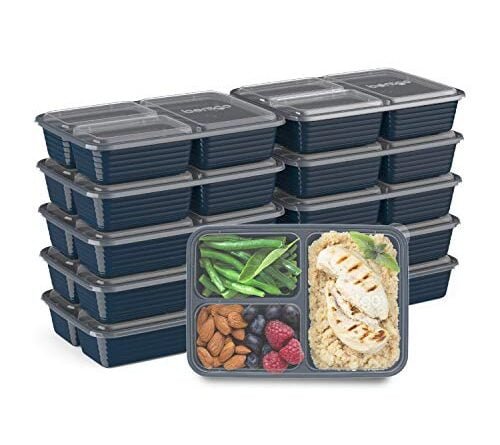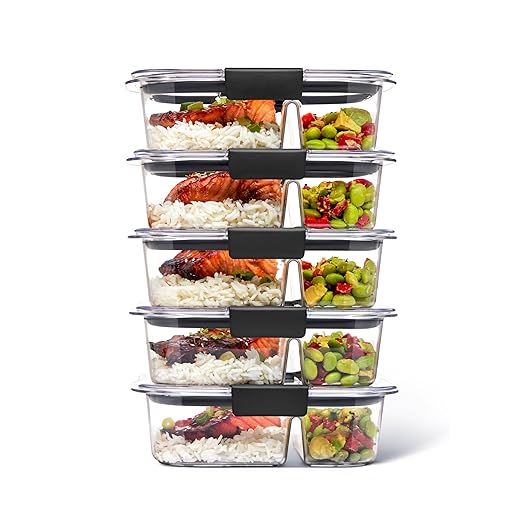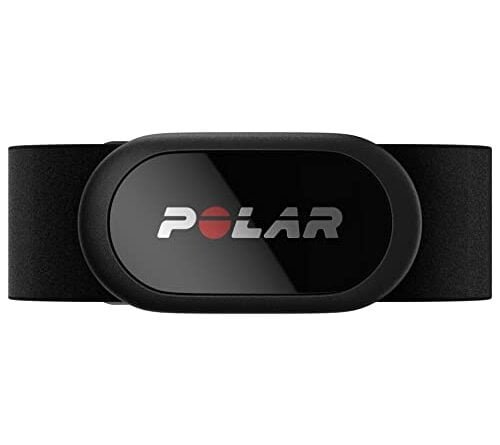
Hey there! Are you tired of struggling to clean your meal prep containers after a long day of meal prepping? Trust me, we’ve all been there. It can be frustrating when you put in the effort to prepare healthy meals in advance, only to find yourself scrubbing away at stubborn stains and odors. But fear not, because in this blog post, we’re going to show you the secrets to effectively cleaning your meal prep containers. We understand the struggle, and we’re here to help you make your cleaning process a breeze. So, let’s dive in and discover the best ways to keep your meal prep containers squeaky clean!
The Must-Have Containers for Easy and Efficient Meal Prepping



Why is it important to clean meal prep containers?
When it comes to meal prepping, the focus is often on planning and preparing nutritious meals in advance. However, one crucial aspect that is sometimes overlooked is the cleanliness of meal prep containers. Properly cleaning these containers is essential for maintaining good hygiene and preventing bacterial growth that can lead to foodborne illnesses. In this article, we will discuss why it is important to clean meal prep containers and provide tips for effective cleaning.
![Comfy Package, Nitrile Disposable Gloves - 4 mil. | Latex Free and Rubber Free | Non-Sterile Powder Free Gloves [100 Count - Small]](https://m.media-amazon.com/images/I/71GJx79GiFL._SS520_.jpg)


1. Hygiene Matters
Maintaining good hygiene is paramount when it comes to food preparation. Meal prep containers come into direct contact with our food, and any dirt, residue, or bacteria left behind can contaminate our meals. By ensuring that our containers are clean, we reduce the risk of cross-contamination and protect ourselves from harmful bacteria.
2. Prevent Bacterial Growth
Food remnants left in meal prep containers can become a breeding ground for bacteria. The warm and moist environment inside a closed container creates the perfect conditions for bacteria to multiply rapidly. This can lead to food spoilage and the risk of foodborne illnesses such as salmonella or E. coli.
3. Extend the Lifespan of Containers
Properly cleaning meal prep containers not only ensures hygiene but also helps extend their lifespan. Residue left in containers can cause stains, odors, or even damage the material over time. By regularly cleaning and maintaining these containers, we can enjoy their use for a longer period, minimizing the need for frequent replacements.
Tips for Effective Cleaning
Now that we understand the importance of cleaning meal prep containers, let’s look at some tips for effective cleaning:
- Immediate Rinse: After using a container, rinse it immediately with warm water to remove any food particles and prevent them from drying or sticking.
- Use Dishwashing Liquid: Apply a small amount of dishwashing liquid to your container, and use a sponge or brush to scrub away any remaining residue. Make sure to thoroughly clean all corners and crevices.
- Hot Water Rinse: Hot water helps kill bacteria effectively. Rinse the container with hot water to ensure thorough cleaning.
- Sanitize with Vinegar: For an extra level of cleanliness, consider sanitizing your meal prep containers with vinegar. Fill them with a mixture of equal parts vinegar and water, let it sit for a few minutes, then rinse thoroughly.
- Allow Air Drying: After cleaning, allow your containers to air dry completely before storing them. This helps prevent the growth of mold or mildew.
Remember, different containers may have specific cleaning instructions, so always refer to the manufacturer’s guidelines for the best cleaning practices.
Materials and types of meal prep containers
When it comes to meal prep, choosing the right containers is crucial to keep your food fresh and organized throughout the week. With so many options available in the market, it can be overwhelming to find the perfect fit for your needs. In this article, we will explore the different materials and types of meal prep containers, along with cleaning tips specific to each.


Plastic Containers
Plastic containers are the most popular choice for meal prepping due to their affordability and versatility. Here are some common types of plastic containers you’ll come across:
- Polypropylene (PP): This is a durable and microwave-safe plastic. Look for containers labeled as BPA-free to ensure they are safe for food storage.
- Polyethylene (PE): PE containers are lightweight and resistant to stains. They are great for storing cold meals such as salads or sandwiches.
Cleaning tips for plastic containers:
- Hand wash with warm soapy water to prevent warping or melting in the dishwasher.
- Avoid using abrasive sponges or cleaners that can damage the plastic.
- To remove stubborn stains or odors, soak the containers in a mixture of baking soda and water overnight.
Glass Containers
Glass containers offer a more durable and eco-friendly option for meal prep. They can withstand high temperatures and are less likely to retain odors or stains. Here are two types of glass containers you might consider:
- Borosilicate Glass: This type of glass is resistant to thermal shock, making it safe to use in the oven or freezer. Look for containers with airtight lids to keep your food fresh.
- Tempered Glass: Tempered glass containers are stronger and less prone to breakage. They are ideal for meal prepping on the go, as they can withstand the rigors of transportation.
Cleaning tips for glass containers:
- Glass containers are dishwasher-safe, but it’s always a good idea to check the manufacturer’s instructions.
- To remove stubborn stains, mix baking soda and water to form a paste and gently scrub the affected areas.
- Avoid sudden temperature changes when using glass containers, as they can cause breakage.
Stainless Steel Containers
Stainless steel containers are an excellent option for those looking for a long-lasting and sustainable meal prep solution. They are lightweight, durable, and free from harmful chemicals. Here’s the type of stainless steel container you might consider:
- Food-Grade Stainless Steel: Look for containers made from 18/8 or 304 stainless steel, as they are safe for food storage. These containers are non-reactive, meaning they won’t leach any flavors or odors into your food.
Cleaning tips for stainless steel containers:
- Hand wash with warm soapy water to prevent scratching the surface.
- Avoid using abrasive cleaners or scrubbers that can damage the stainless steel.
- To remove any residue, soak the containers in a mixture of vinegar and water for a few minutes before washing.
Silicone Containers
Silicone containers are a convenient and space-saving option for meal prep. They are flexible, collapsible, and easy to store when not in use. Here’s what to know about silicone containers:
- Food-Grade Silicone: Look for containers made from 100% food-grade silicone. These containers are safe for freezer, microwave, and oven use.
Cleaning tips for silicone containers:
- Silicone containers are dishwasher-safe, but hand washing with warm soapy water is recommended.
- Avoid using sharp objects or knives that can pierce the silicone surface.
- To remove any stains or odors, soak the containers in a mixture of baking soda and water before washing.
In summary, the choice of meal prep containers depends on your specific needs and preferences. Plastic containers offer affordability and versatility, while glass containers provide durability and eco-friendliness. Stainless steel containers are perfect for long-lasting use, and silicone containers offer convenience and space-saving capabilities. Whichever material you choose, proper cleaning and maintenance will ensure that your meal prep containers last for many meals to come.
Effective cleaning methods for meal prep containers
Meal prep containers are a convenient and efficient way to store your pre-made meals, ensuring that you have healthy options readily available throughout the week. However, it’s crucial to keep these containers clean to prevent any cross-contamination or lingering food odors. In this blog post, we will walk you through step-by-step instructions on how to effectively clean your meal prep containers, both through hand washing and dishwasher options.
Hand Washing Method
Hand washing your meal prep containers is a straightforward and effective way to ensure they are thoroughly cleaned. Follow these steps to achieve optimal cleanliness:
- Rinse with Warm Water: Start by rinsing your meal prep container under warm water to remove any visible food particles.
- Use Dish Soap: Apply a few drops of dish soap to a sponge or dishcloth, and lather it up. Make sure to choose a dish soap that is tough on grease and food stains. A brand like Dawn Ultra or Palmolive Ultra is highly recommended for their effective cleaning power.
- Scrub Thoroughly: Scrub all areas of the container, including the lid, using the soapy sponge or dishcloth. Pay extra attention to corners and crevices where food residue may be hiding.
- Rinse Again: Rinse the container thoroughly under warm water to remove any remaining soap residue.
- Air Dry: Allow the container to air dry completely before storing it away. This step is crucial to prevent any moisture buildup, which can lead to mold or mildew.
Dishwasher Method
If you have a dishwasher, utilizing this appliance for cleaning your meal prep containers can save you time and effort. Follow these steps to ensure your containers come out spotless:
- Remove Excess Food: Before placing your containers in the dishwasher, scrape off any excess food remnants into the trash. This step helps prevent clogs and ensures a more effective cleaning process.
- Load Containers Correctly: Place your meal prep containers on the top rack of the dishwasher, facing downwards. This position allows the water to reach all areas of the container, ensuring a thorough clean.
- Add Dishwasher Detergent: Choose a dishwasher detergent that is specifically formulated to tackle tough food stains and odors. Brands like Cascade Complete or Finish Powerball are known for their excellent cleaning performance.
- Select Appropriate Cycle: Opt for a dishwasher cycle that includes a high-temperature wash and a heated dry. This combination helps to sanitize the containers and eliminate any bacteria or germs.
- Air Dry: Once the dishwasher cycle is complete, open the dishwasher door slightly to allow the containers to air dry fully. This step helps prevent any moisture buildup and ensures your containers are ready for use.
Maintenance and Storage Tips for Meal Prep Containers
Meal prep containers are a convenient and practical way to organize your meals in advance. Whether you’re a busy professional or a health-conscious individual, these containers play a crucial role in keeping your food fresh and easily accessible. To ensure that your meal prep containers stay clean and in good condition for longer, here are some maintenance and storage tips to follow:
1. Clean Containers Properly
To maintain the cleanliness of your meal prep containers, it is important to clean them thoroughly after each use. Follow these steps:
- Rinse the containers with warm water to remove any food residue.
- Use a mild dish soap and a non-abrasive sponge or cloth to scrub the containers.
- Pay extra attention to any stained or greasy areas, and scrub them gently until clean.
- Rinse the containers thoroughly with warm water to remove any soap residue.
- Allow the containers to air dry completely before storing them.
2. Avoid Extreme Temperatures
Extreme temperatures can cause damage to meal prep containers, so it is important to handle them with care:
- Do not expose the containers to direct sunlight or extreme heat, as this can cause warping or melting.
- Similarly, avoid placing the containers in the freezer if they are not specifically designed for freezer use, as this can lead to cracks or breakage.
- Always check the manufacturer’s guidelines to determine the temperature limits for your specific containers.
3. Store Containers Properly
Proper storage is key to keeping your meal prep containers in good condition. Follow these tips:
- Stack the containers neatly to save storage space, but avoid stacking them when they are still wet or damp to prevent mold or odor buildup.
- If possible, store the containers with the lids off to allow air circulation, which helps prevent moisture buildup.
- Consider using a dedicated storage container or drawer to keep your meal prep containers organized and easily accessible.
4. Avoid Using Harsh Chemicals
While it may be tempting to use strong chemicals for deep cleaning, it is best to avoid them as they can damage the containers. Stick to mild dish soap and warm water for regular cleaning. If you encounter tough stains or persistent odors, try using baking soda or white vinegar as natural alternatives.
5. Check for Damaged or Worn-out Containers
Regularly inspect your meal prep containers for any signs of damage or wear:
- Check for cracks, chips, or warping, as these can compromise the integrity of the containers.
- Pay attention to the lids and ensure they fit securely to prevent leaks or spills.
- If you notice any damage or wear, it’s time to replace the containers to maintain food safety and storage efficiency.
By following these maintenance and storage tips, you can extend the lifespan of your meal prep containers and ensure they remain clean and functional for longer. Remember, proper cleaning, storage, and regular inspection are essential for maintaining the quality of your containers. Invest in high-quality meal prep containers from reliable brands like Rubbermaid, Pyrex, or Glasslock to enhance your meal prepping experience.
Additional Resources:
- Rubbermaid Brilliance Food Storage Containers
- Pyrex Simply Store Glass Food Storage Containers
- Glasslock Food Storage Containers
Wrapping it up: Tips for spotless meal prep containers
In conclusion, effectively cleaning your meal prep containers is crucial for maintaining food safety and prolonging their lifespan. Throughout this post, we discussed several key points to consider. Firstly, always check the manufacturer’s instructions for specific cleaning recommendations. Secondly, choose the right cleaning method based on the container’s material, such as hand washing for delicate materials and dishwasher for sturdier ones. Additionally, using hot water, soap, and a good scrubbing brush is essential for removing stubborn stains and odors. Lastly, make sure to thoroughly dry your containers before storing them to prevent mold or bacteria growth.
Considering these factors, our recommendation is to establish a routine cleaning schedule for your meal prep containers. By doing so, you can ensure that they remain in great condition, ready for your next meal prep session. Remember, a clean container means a healthier and more enjoyable eating experience. So, take the time to clean your meal prep containers effectively, and reap the benefits in the long run. Happy meal prepping!







